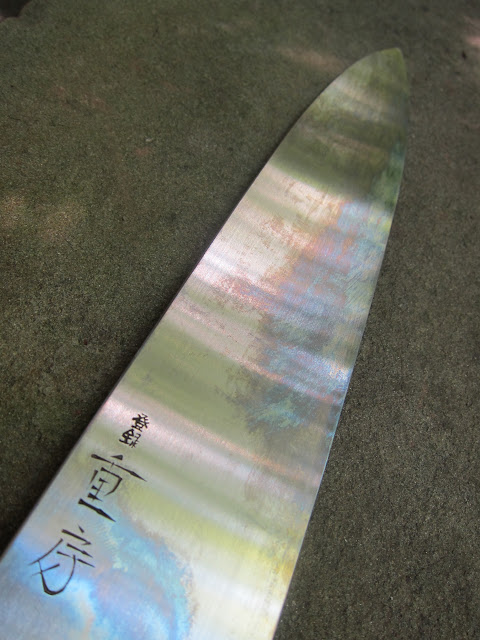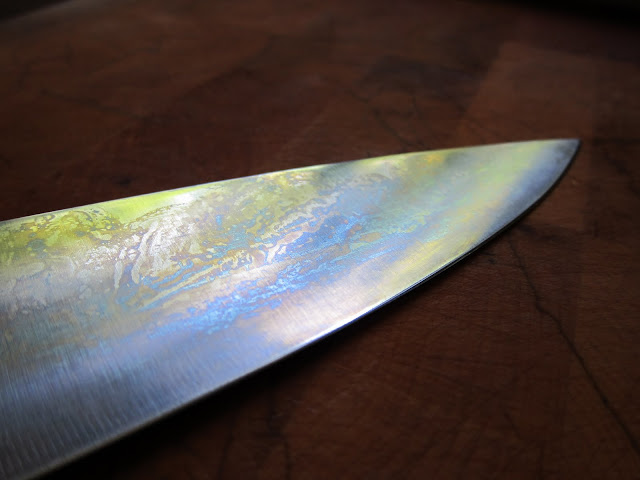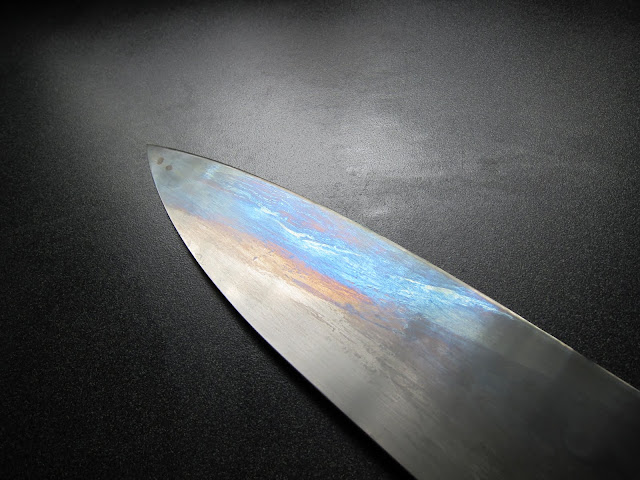I have two new Konosuke White #2 knives.
I read the patina they eventually develop provides a small amount of rust protection. (Is this a myth?)
I've also seen videos where people use mustard (or vinegar) and water to intentionally speed up a patina.
Is there any advantage to just letting the patina develop naturally and slowly over time?
My cast iron pans have a wonderful durable non-stick finish after years of oiling/seasoning after every use.
I believe this old patina cannot be accelerated; you must be patient.
I'm wondering if people do the mustard/vinegar thing purely for cosmetic reasons - or for the health of the knife.
I read the patina they eventually develop provides a small amount of rust protection. (Is this a myth?)
I've also seen videos where people use mustard (or vinegar) and water to intentionally speed up a patina.
Is there any advantage to just letting the patina develop naturally and slowly over time?
My cast iron pans have a wonderful durable non-stick finish after years of oiling/seasoning after every use.
I believe this old patina cannot be accelerated; you must be patient.
I'm wondering if people do the mustard/vinegar thing purely for cosmetic reasons - or for the health of the knife.










